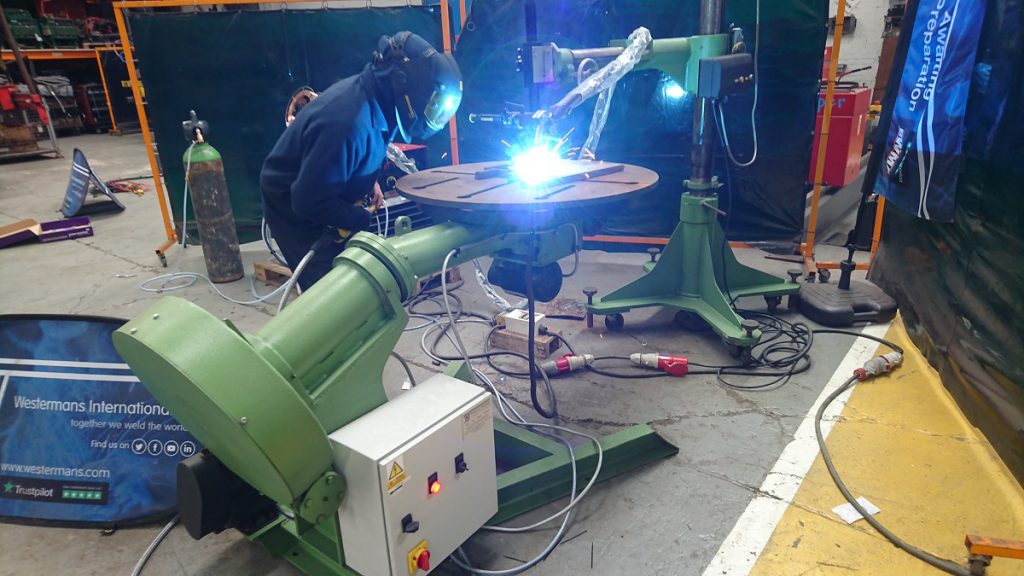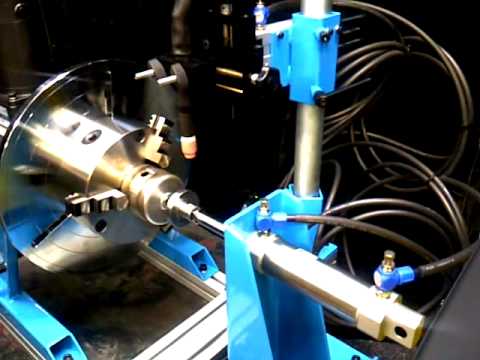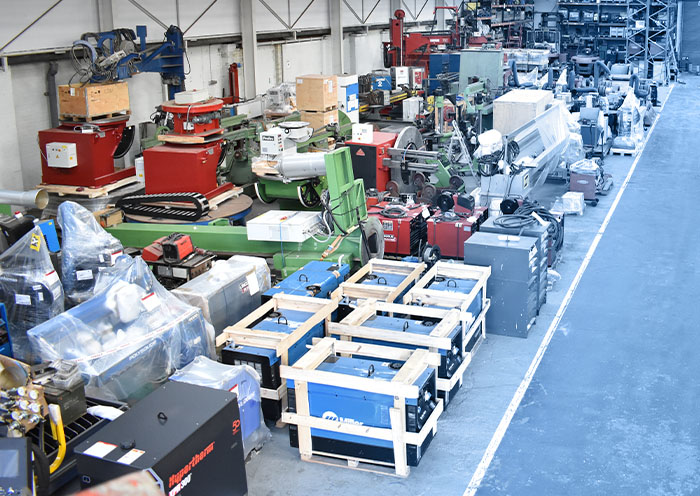Do you want to weld more efficiently? Would you like to produce more precise welds?
Welding positioners and manipulators are designed to aid the welder in their job, by way of turning, clamping or holding the torch to enable a more versatile weld process.
No matter what size or shape the work piece is, there is generally a form of positional machinery that will suit.
Welding positioners are available in either bench top or floor mounted types, from 25kg up to over 100 ton! (floor mounted obviously!)
They are mainly variable speed in both clockwise and counter clockwise directions.
The table top itself more often than not having 4 slots in the top to fix additional tooling such as chucks to hold the work piece in place.
Some models rotate on the horizontal plain (welding turntables), and some also tilt vertical (welding positioners), with the majority of work pieces being in the vertical position to allow for consistent welding.
Some manipulators are ‘rotilting’ – literally a mix of rotating and tilting, consisting of a face plate on an ‘arm’ allowing the positioner itself to be set at various heights and angles through 360°.
Providing the quickest means whilst still allowing maximum access to the workpiece, ideal for manual, semi automatic or fully automatic welding.
This is an example of a Bode rotilting welding positioner.
As you can see instead of the table top being rotated in a vertical or horizontal mode; it is also able to tilt to the side, making easy work of more acute angles when flange welding for example.
Welding positioners can also be used alongside other positioning equipment such as pipe rotators, head and tail stocks and welding booms to produce a more automated, pipeline process.
Whilst the vessel sits on the welding rotators to evenly turn the weld, a head stock could also be used to clamp the piece.
Whilst it is the job of the column and boom manipulator to move the welding head up, down and across the vessel to perform the weld.
The column and boom is fitted with a power source and controls (usually submerged arc) to be able to perform the welds automatically.
Below is a video of a steel can fabrication process in which you can see this weld positioning equipment in situ.
A fine example from Mabey Bridge Ltd – part of the Mabey Group – UK based specialist suppliers providing high quality steel bridging infrastructure, wind turbine towers and heavy plated structural steel work worldwide.


 600+ machines in stock
600+ machines in stock Worldwide delivery
Worldwide delivery Rated Excellent
Rated Excellent Warranty included
Warranty included Qualified engineers
Qualified engineers


follow us on